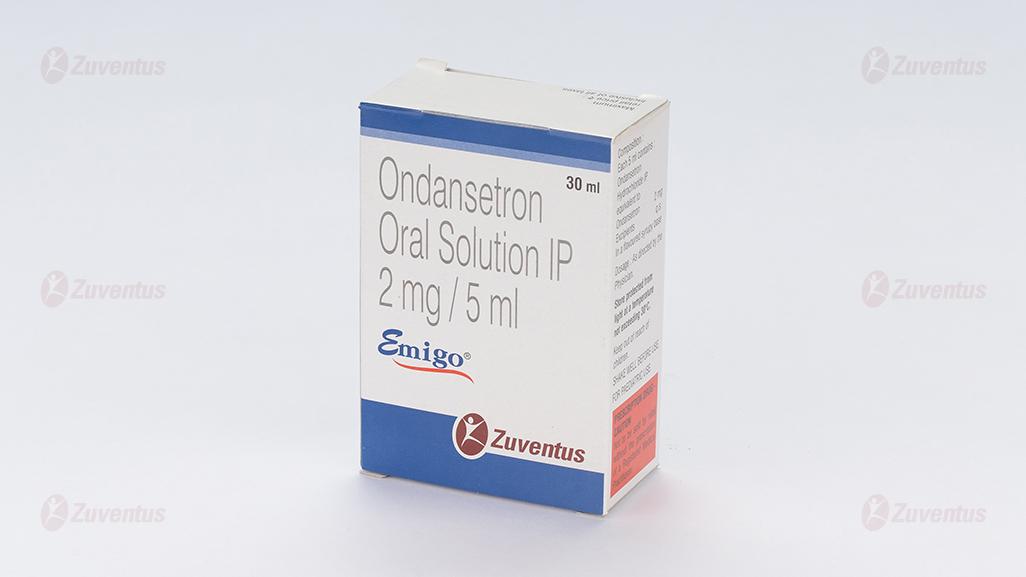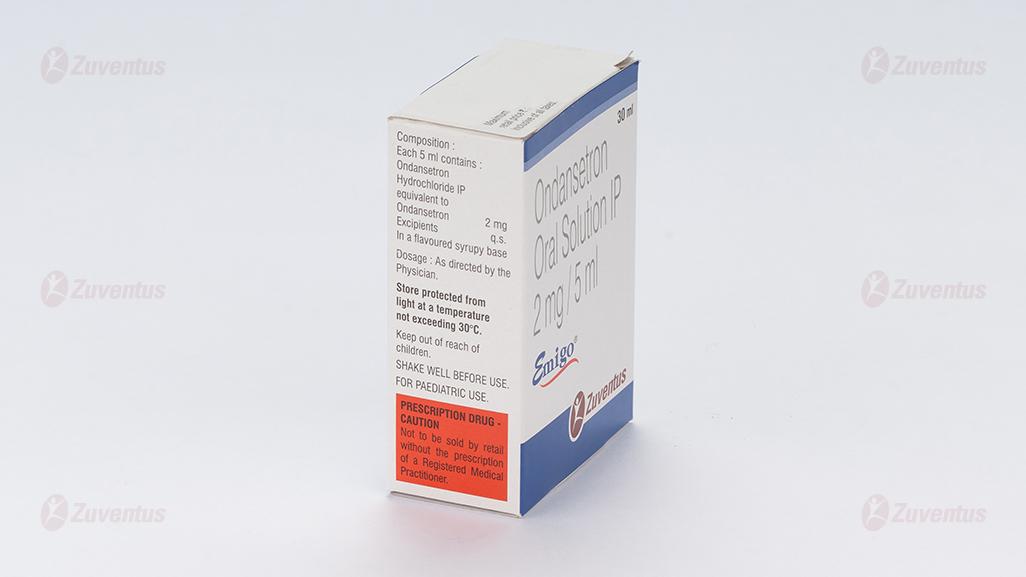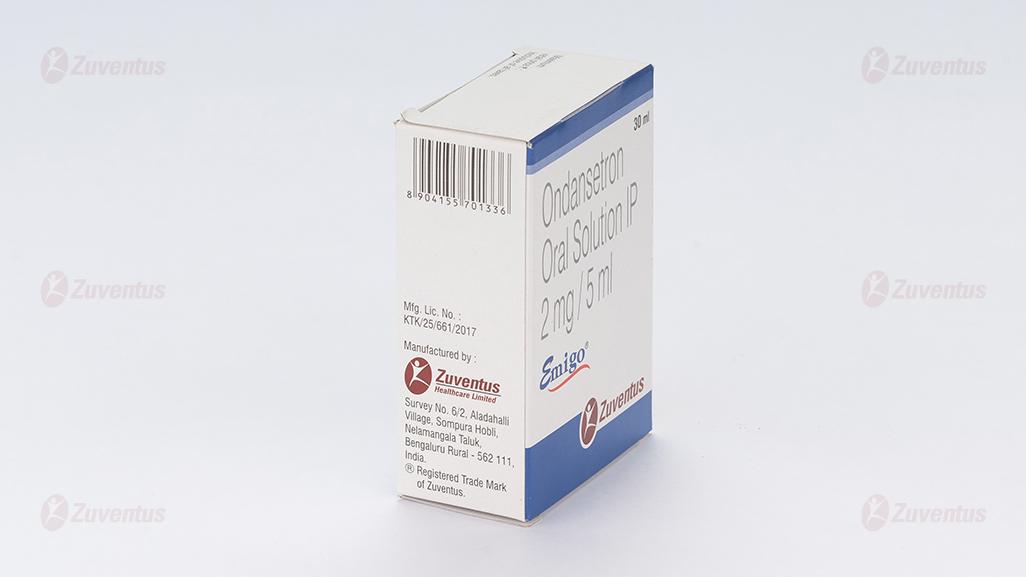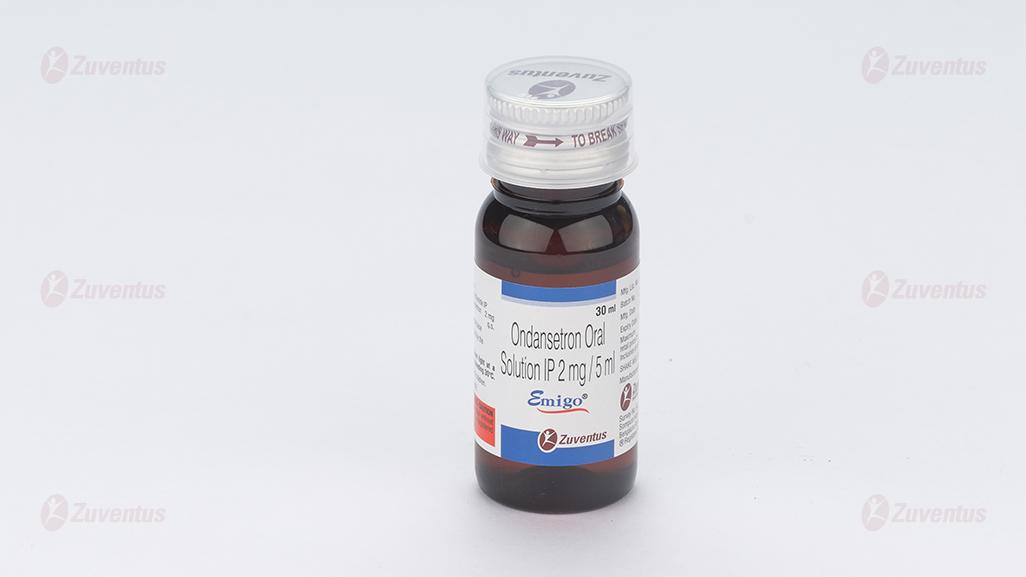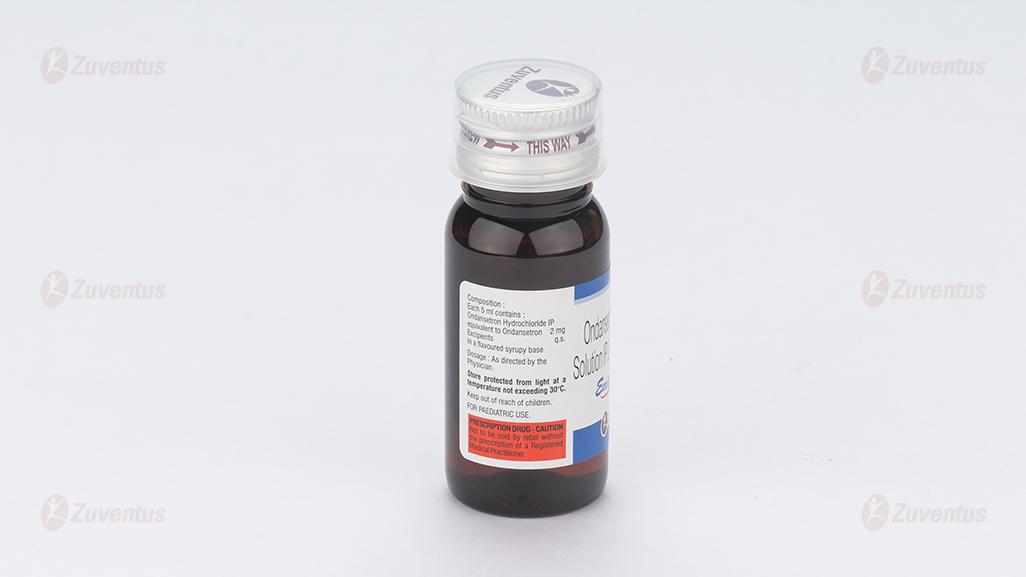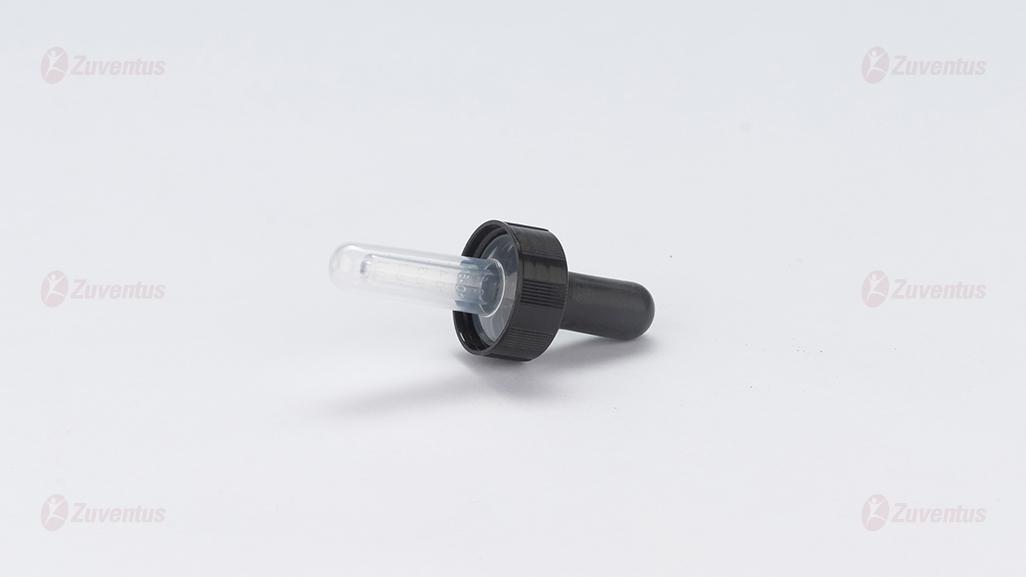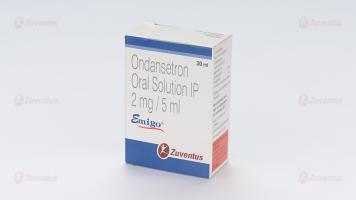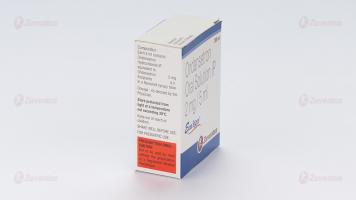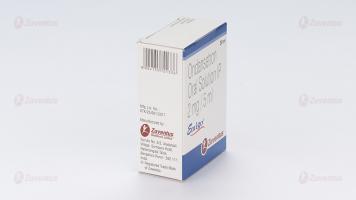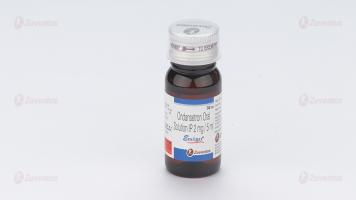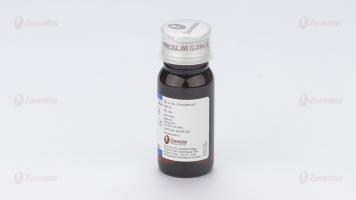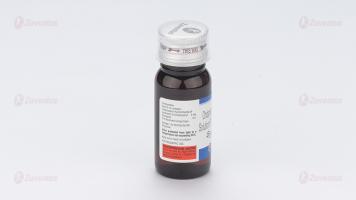Emigo Oral Solution
Therapy Area
Gastrointestinal
1.0 Generic name
Ondansetron Oral Solution IP 2 mg/5 ml
2.0 Qualitative and quantitative composition
Each 5 ml contains:
Ondansetron Hydrochloride IP
Equivalent to Ondansetron 2mg
Excipients q.s.
In a flavoured syrupy base
3.0 Dosage form and strength
Oral Solution.
2 mg/5 ml
FOR PAEDIATRIC USE.
4.0 Clinical particulars
4.1.Therapeutic indication
For chemotherapeutic induced nausea and vomiting.
4.2.Posology and method of administration
Paediatric Population:
CINV in children aged ≥ 6 months and adolescents:
The dose for CINV can be calculated based on body surface area (BSA) or weight – see below. In paediatric clinical studies, ondansetron was given by IV infusion diluted in 25 to 50 mL of saline or other compatible infusion fluid and infused over not less than 15 minutes.
Weight-based dosing results in higher total daily doses compared to BSA-based dosing.
There are no data from controlled clinical trials on the use of ondansetron in the prevention of delayed or prolonged CINV. There are no data from controlled clinical trials on the use of ondansetron for radiotherapy-induced nausea and vomiting in children.
Dosing by BSA:
Ondansetron should be administered immediately before chemotherapy as a single intravenous dose of 5 mg/m2. The single intravenous dose must not exceed 8 mg. Oral dosing can commence 12 hours later and may be continued for up to 5 days (Table 1). The total dose over 24 hours (given as divided doses) must not exceed adult dose of 32 mg.
Table 1: BSA-based dosing for Chemotherapy - Children aged ≥6 months and adolescents
| BSA | Day 1(a,b) | Days 2-6(b) |
| < 0.6 m2 | 5 mg/m2 IV plus 2 mg syrup after 12 hours | 2 mg syrup every 12 hours |
| ≥ 0.6 m2 to ≤ 1.2 m2 | 5 mg/m2 IV plus 4 mg syrup or tablet after 12 hours | 4 mg syrup or tablet every 12 hours |
| > 1.2 m2 | 5 mg/m2 or 8 mg IV plus 8 mg syrup or tablet after 12 hours | 8 mg syrup or tablet every 12 hours |
a The intravenous dose must not exceed 8 mg.
b The total dose over 24 hours (given as divided doses) must not exceed adult dose of 32 mg.
Dosing by bodyweight:
Weight-based dosing results in higher total daily doses compared to BSA-based dosing.
Ondansetron should be administered immediately before chemotherapy as a single intravenous dose of 0.15 mg/kg. The intravenous dose must not exceed 8 mg. Two further intravenous doses may be given in 4-hourly intervals. Oral dosing can commence 12 hours later and may be continued for up to 5 days (Table 2). The total dose over 24 hours (given as divided doses) must not exceed adult dose of 32 mg.
Table 2: Weight-based dosing for Chemotherapy - Children aged ≥6 months and adolescents
| Weight | Day 1 (a,b) | Days 2-6(b) |
| ≤ 10 kg | Up to 3 doses of 0.15 mg/kg IV every 4 hours | 2 mg syrup every 12 hours |
| > 10 kg | Up to 3 doses of 0.15 mg/kg IV every 4 hours | 4 mg syrup/tablet every 12 hours |
a The intravenous dose must not exceed 8 mg.
b The total dose over 24 hrs (divided doses) must not exceed adult dose of 32 mg.
Pediatric Recommended Dosage Regimen for Prevention of Nausea and Vomiting
| Indication | Dosage Regimen |
| Moderately Emetogenic Cancer Chemotherapy |
12 to 17 years of age:
4 to 11 years of age:
|
For both indications:
Patients with Renal impairment:
No alteration of daily dosage or frequency of dosing, or route of administration are required.
Patients with Hepatic impairment:
Clearance of ondansetron is significantly reduced and serum half-life significantly prolonged in subjects with moderate or severe impairment of hepatic function. In such patients a total daily dose of 8mg should not be exceeded.
Patients with poor sparteine/debrisoquine metabolism:
The elimination half-life of ondansetron is not altered in subjects classified as poor metabolisers of sparteine and debrisoquine. Consequently, in such patients repeat dosing will give drug exposure levels no different from those of the general population. No alteration of daily dosage or frequency of dosing is required.
4.3.Contraindications
Concomitant use with apomorphine. Hypersensitivity to the active substance or to other selective 5-HT3 receptor antagonists (e.g. granisetron, dolasetron) or to any of the excipients.
4.4. Special warnings and precautions for use
Hypersensitivity reactions have been reported in patients who have exhibited hypersensitivity to other selective 5HT3 receptor antagonists. Respiratory events should be treated symptomatically and clinicians should pay particular attention to them as precursors of hypersensitivity reactions.
Ondansetron prolongs the QT interval in a dose-dependent manner. In addition, post-marketing cases of Torsade de Pointes have been reported in patients using ondansetron. Avoid ondansetron in patients with congenital long QT syndrome. Ondansetron should be administered with caution to patients who have or may develop prolongation of QTc, including patients with electrolyte abnormalities, congestive heart failure, bradyarrhythmias or patients taking other medicinal products that lead to QT prolongation or electrolyte abnormalities.
Hypokalemia and hypomagnesaemia should be corrected prior to ondansetron administration.
There have been post-marketing reports describing patients with serotonin syndrome (including altered mental status, autonomic instability and neuromuscular abnormalities) following the concomitant use of ondansetron and other serotonergic drugs (including selective serotonin reuptake inhibitors (SSRI) and serotonin noradrenaline reuptake inhibitors (SNRIs)). If concomitant treatment with ondansetron and other serotonergic drugs is clinically warranted, appropriate observation of the patient is advised.
As ondansetron is known to increase large bowel transit time, patients with signs of subacute intestinal obstruction should be monitored following administration. In patients with adenotonsillar surgery, prevention of nausea and vomiting with ondansetron may mask occult bleeding. Therefore, such patients should be followed carefully after ondansetron.
Paediatric population
Paediatric patients receiving ondansetron with hepatotoxic chemotherapeutic agents should be monitored closely for impaired hepatic function.
CINV
When calculating the dose on an mg/kg basis and administering three doses at 4-hour intervals, the total daily dose will be higher than if one single dose of 5 mg/m2 followed by an oral dose is given. The comparative efficacy of these two different dosing regimens has not been investigated in clinical trials. Cross-trial comparison indicates similar efficacy for both regimens.
4.5. Interaction with other medicinal products and other forms of interaction
There is no evidence that ondansetron either induces or inhibits the metabolism of other drugs commonly co-administered with it. Specific studies have shown that ondansetron does not interact with alcohol, temazepam, furosemide, alfentanil, morphine, lignocaine, propofol, and thiopental.
Ondansetron is metabolised by multiple hepatic cytochrome P-450 enzymes: CYP3A4, CYP2D6 and CYP1A2. Due to the multiplicity of metabolic enzymes capable of metabolising ondansetron, enzyme inhibition or reduced activity of one enzyme (e.g. CYP2D6 genetic deficiency) is normally compensated by other enzymes and should result in little or no significant change in overall ondansetron clearance or dose requirement.
Phenytoin, Carbamezapine and Rifampicin: In patients treated with potent inducers of CYP3A4 (i.e. phenytoin, carbamazepine and rifampicin), the oral clearance of ondansetron was increased and ondansetron blood concentrations were decreased. Tramadol: Data from small studies indicate that ondansetron may reduce the analgesic effect of tramadol.
Apomorphine: Based on reports of profound hypotension and loss of consciousness when ondansetron was administered with apomorphine hydrochloride, concomitant use with apomorphine is contraindicated.
Caution should be exercised when ondansetron is co-administered with drugs that prolong the QT interval and/or cause electrolyte abnormalities. (See section 4.4). Use with ondansetron with QT prolonging drugs may result in additional QT prolongation. Concomitant use of ondansetron with cardiotoxic drugs (e.g. anthracyclines (such as doxorubicin, daunorubicin) or trastuzumab), antibiotics (such as erythromycin), antifungals (such as ketoconazole), antiarrhythmics (such as amiodarone) and beta blockers (such as atenolol or timolol) may increase the risk of arrhythmias (section 4.4).
Serotonergic Drugs (e.g. SSRIs and SNRIs): There have been post-marketing reports describing patients with serotonin syndrome (including altered mental status, autonomic instability and neuromuscular abnormalities) following the concomitant use of ondansetron and other serotonergic drugs (including SSRIs and SNRIs).
4.6. Fertility, pregnancy and lactation
Women of childbearing potential
Women of childbearing potential should consider the use of contraception.
Pregnancy
Based on human experience from epidemiological studies, ondansetron is suspected to cause orofacial malformations, when administered during the first trimester of pregnancy.
In one cohort study including 1.8 million pregnancies, first trimester ondansetron use was associated with an increased risk of oral clefts (3 additional cases per 10,000 women treated; adjusted relative risk, 1.24, (95% CI 1.03-1.48)).
The available epidemiological studies on cardiac malformations show conflicting results. Animal studies do not indicate direct or indirect harmful effects with respect to reproductive toxicity.
Ondansetron should not be used during the first trimester of pregnancy.
Breast-feeding
Tests have shown that ondansetron passes into the milk of lactating animals. It is, therefore, recommended that mothers receiving ondansetron should not breast-feed their babies.
Fertility
There is no information on the effects of ondansetron on human fertility.
4.7. Effects on ability to drive and use machines
In psychomotor testing, ondansetron does not impair performance nor cause sedation. No detrimental effects on such activities are predicted from the pharmacology of ondansetron.
4.8. Undesirable effects
Adverse events are listed below by system organ class and frequency. Frequencies are defined as: very common (≥1/10), common (≥1/100 to <1/10), uncommon (≥1/1,000 to <1/100), rare (≥1/10,000 to <1/1,000) and very rare (<1/10,000) including isolated reports. Very common, common and uncommon events were generally determined from clinical trial data. The incidence in placebo was taken into account. Rare and very rare events were generally determined from post-marketing spontaneous data. The following frequencies are estimated at the standard recommended doses of ondansetron according to indication and formulation. The adverse event profiles in children and adolescents were comparable to that seen in adults.
Immune system disorders
Rare: immediate hypersensitivity reactions sometimes severe, including anaphylaxis.
Nervous system disorders
Very common: headache.
Uncommon: Seizures, movement disorders including extrapyramidal reactions such as dystonic reactions, oculogyric crisis and dyskinesia. (1)
Rare: Dizziness predominantly during rapid IV administration.
Eye disorders
Rare: Transient visual disturbances (e.g. blurred vision), predominantly during IV administration.
Very rare: Transient blindness, predominantly during intravenous administration. (2)
Cardiac disorders
Uncommon: Arrhythmias, chest pain with or without ST segment depression, bradycardia.
Rare: QTc prolongation (including Torsade de Pointes).
Vascular disorders
Common: Sensation of warmth or flushing.
Uncommon: Hypotension.
Respiratory, thoracic and mediastinal disorders
Uncommon: Hiccups.
Gastrointestinal disorders
Common: Constipation.
Hepatobiliary disorders
Uncommon: Asymptomatic increases in liver function tests.(3)
1.Observed without definitive evidence of persistent clinical sequelae.
2.The majority of the blindness cases reported resolved within 20 minutes. Most patients had received chemotherapeutic agents, which included cisplatin. Some cases of transient blindness were reported as cortical in origin.
3.These events were observed commonly in patients receiving chemotherapy with cisplatin.
Reporting of suspected adverse reactions
Reporting suspected adverse reactions after authorisation of the medicinal product is important. It allows continued monitoring of the benefit/risk balance of the medicinal product. Healthcare professionals are asked to report any suspected adverse reactions via email to: medico@zuventus.com
Website: https://www.zuventus.com/drug-safety-reporting
By reporting side effects, you can help provide more information on the safety of this medicine.
4.9.Overdose
Symptoms and Signs
Little is known at present about overdosage with ondansetron. In the majority of cases, symptoms were similar to those already reported in patients receiving recommended doses. Manifestations that have been reported include visual disturbances, severe constipation, hypotension and a vasovagal episode with transient second degree AV block.
Ondansetron prolongs the QT interval in a dose-dependent fashion. ECG monitoring is recommended in cases of overdose.
Paediatric population
Paediatric cases consistent with serotonin syndrome have been reported after inadvertent oral overdoses of ondansetron (exceeded estimated ingestion of 4 mg/kg) in infants and children aged 12 months to 2 years.
Treatment
There is no specific antidote for ondansetron, therefore in all cases of suspected overdose, symptomatic and supportive therapy should be given as appropriate.
Further management should be as clinically indicated or as recommended by the national poisons centre, where available.
The use of ipecacuanha to treat overdose with ondansetron is not recommended, as patients are unlikely to respond due to the anti-emetic action of ondansetron itself.
5.0 Pharmacological properties
5.1.Pharmacodynamic properties
Mechanism of action
Ondansetron is a potent, highly selective 5HT3 receptor-antagonist. Its precise mode of action in the control of nausea and vomiting is not known. Chemotherapeutic agents and radiotherapy may cause release of 5HT in the small intestine initiating a vomiting reflex by activating vagal afferents via 5HT3 receptors. Ondansetron blocks the initiation of this reflex. Activation of vagal afferents may also cause a release of 5HT in the area postrema, located on the floor of the fourth ventricle, and this may also promote emesis through a central mechanism. Thus, the effect of ondansetron in the management of the nausea and vomiting induced by cytotoxic chemotherapy and radiotherapy is probably due to antagonism of 5HT3 receptors on neurons located both in the peripheral and central nervous system.
The mechanisms of action in post-operative nausea and vomiting are not known but there may be common pathways with cytotoxic induced nausea and vomiting.
Ondansetron does not alter plasma prolactin concentrations.
The role of ondansetron in opiate-induced emesis is not yet established
QT prolongation
The effect of ondansetron on the QTc interval was evaluated in a double blind, randomised, placebo and positive (moxifloxacin) controlled, crossover study in 58 healthy adult men and women.
Ondansetron doses included 8 mg and 32 mg infused intravenously over 15 minutes. At the highest tested dose of 32 mg, the maximum mean (upper limit of 90% CI) difference in QTcF from placebo after baseline-correction was 19.6 (21.5) msec. At the lower tested dose of 8 mg, the maximum mean (upper limit of 90% CI) difference in QTcF from placebo after baseline-correction was 5.8 (7.8) msec. In this study, there were no QTcF measurements greater than 480 msec and no QTcF prolongation was greater than 60 msec.
Paediatric population
CINV
The efficacy of ondansetron in the control of emesis and nausea induced by cancer chemotherapy was assessed in a double-blind randomised trial in 415 patients aged 1 to 18 years (S3AB3006). On the days of chemotherapy, patients received either ondansetron 5 mg/m2 intravenous + ondansetron 4 mg orally after 8-12 hours or ondansetron 0.45 mg/kg intravenous + placebo orally after 8-12 hours. Post-chemotherapy both groups received 4 mg ondansetron syrup twice daily for 3 days. Complete control of emesis on worst day of chemotherapy was 49% (5 mg/m2 intravenous + ondansetron 4 mg orally) and 41% (0.45 mg/kg intravenous + placebo orally). Post-chemotherapy both groups received 4 mg ondansetron syrup twice daily for 3 days. There was no difference in the overall incidence or nature of adverse events between the two treatment groups.
A double-blind randomised placebo-controlled trial (S3AB4003) in 438 patients aged 1 to 17 years demonstrated complete control of emesis on worst day of chemotherapy in:
73% of patients when ondansetron was administered intravenously at a dose of 5 mg/m2 intravenous together with 2-4 mg dexamethasone orally. 71% of patients when ondansetron was administered as syrup at a dose of 8 mg + 2-4 mg dexamethasone orally on the days of chemotherapy.
Post-chemotherapy both groups received 4 mg ondansetron syrup twice daily for 2 days. There was no difference in the overall incidence or nature of adverse events between the two treatment groups.
The efficacy of ondansetron in 75 children aged 6 to 48 months was investigated in an open-label, non-comparative, single-arm study (S3A40320). All children received three 0.15 mg/kg doses of intravenous ondansetron, administered 30 minutes before the start of chemotherapy and then at four and eight hours after the first dose. Complete control of emesis was achieved in 56% of patients.
Another open label, non-comparative, single-arm study (S3A239) investigated the efficacy of one intravenous dose of 0.15 mg/kg ondansetron followed by two oral ondansetron doses of 4 mg for children aged < 12 years and 8 mg for children aged ≥ 12 years (total no. of children n=28). Complete control of emesis was achieved in 42% of patients.
PONV
The efficacy of a single dose of ondansetron in the prevention of post-operative nausea and vomiting was investigated in a randomised, double-blind, placebo-controlled study in 670 children aged 1 to 24 months (post-conceptual age ≥ 44 weeks, weight ≥ 3 kg). Included subjects were scheduled to undergo elective surgery under general anaesthesia and had an ASA status ≤ III. A single dose of ondansetron 0.1 mg/kg was administered within five minutes following induction of anaesthesia. The proportion of subjects who experienced at least one emetic episode during the 24-hour assessment period (ITT) was greater for patients on placebo than those receiving ondansetron (28% vs. 11%, p < 0.0001).
Four double-blind, placebo-controlled studies have been performed in 1469 male and female patients (2 to 12 years of age) undergoing general anaesthesia. Patients were randomised to either single intravenous doses of ondansetron (0.l mg/kg for paediatric patients weighing 40 kg or less, 4 mg for paediatric patients weighing more than 40 kg; number of patients = 735) or placebo (number of patients = 734). Study drug was administered over at least 30 seconds, immediately prior to or following anaesthesia induction. Ondansetron was significantly more effective than placebo in preventing nausea and vomiting. The results of these studies are summarised in Table 3.
Table 3. Prevention and treatment of PONV in Paediatric Patients – Treatment response over 24 hours
| Study | Endpoint | Ondansetron % | Placebo % | p value |
| S3A380 | CR | 68 | 39 | ≤0.001 |
| S3GT09 | CR | 61 | 35 | ≤0.001 |
| S3A381 | CR | 53 | 17 | ≤0.001 |
| S3GT11 | No nausea | 64 | 51 | 0.004 |
| S3GT11 | No emesis | 60 | 47 | 0.004 |
CR = no emetic episodes, rescue or withdrawal
5.2. Pharmacokinetic properties
Following oral administration, ondansetron is passively and completely absorbed from the gastrointestinal tract and undergoes first pass metabolism. Peak plasma concentrations of about 30 mg/ml are attained approximately 1.5 hours after an 8 mg dose. For doses above 8 mg the increase in ondansetron systemic exposure with dose is greater than proportional; this may reflect some reduction in first pass metabolism at higher oral doses.
Mean bioavailability in healthy male subjects, following the oral administration of a single 8 mg tablet, is approximately 55 to 60%. Bioavailability, following oral administration, is slightly enhanced by the presence of food but unaffected by antacids.
The disposition of ondansetron following oral, intramuscular (IM) and intravenous (IV) dosing is similar with a terminal half-life of about 3 hours and steady state volume of distribution of about 140 L. Equivalent systemic exposure is achieved after IM and IV administration of ondansetron. A 4 mg intravenous infusion of ondansetron given over 5 minutes results in peak plasma concentrations of about 65 ng/mL. Following intramuscular administration of ondansetron, peak plasma concentrations of about 25 ng/mL are attained within 10 minutes of injection.
Ondansetron is not highly protein bound (70-76%). Ondansetron is cleared from the systemic circulation predominantly by hepatic metabolism through multiple enzymatic pathways. Less than 5% of the absorbed dose is excreted unchanged in the urine. The absence of the enzyme CYP2D6 (the debrisoquine polymorphism) has no effect on ondansetron's pharmacokinetics. The pharmacokinetic properties of ondansetron are unchanged on repeat dosing.
Special Patient Populations
Gender
Gender differences were shown in the disposition of ondansetron, with females having a greater rate and extent of absorption following an oral dose and reduced systemic clearance and volume of distribution (adjusted for weight).
Children and Adolescents (aged 1 month to 17 years)
In paediatric patients aged 1 to 4 months (n=19) undergoing surgery, weight normalised clearance was approximately 30% slower than in patients aged 5 to 24 months (n=22) but comparable to the patients aged 3 to 12 years. The half-life in the patient population aged 1 to 4 months was reported to average 6.7 hours compared to 2.9 hours for patients in the 5 to 24 month and 3 to 12 year age range. The differences in pharmacokinetic parameters in the 1 to 4 month patient population can be explained in part by the higher percentage of total body water in neonates and infants and a higher volume of distribution for water soluble drugs like ondansetron.
In paediatric patients aged 3 to 12 years undergoing elective surgery with general anaesthesia, the absolute values for both the clearance and volume of distribution of ondansetron were reduced in comparison to values with adult patients. Both parameters increased in a linear fashion with weight and by 12 years of age, the values were approaching those of young adults. When clearance and volume of distribution values were normalised by body weight, the values for these parameters were similar between the different age group populations. Use of weight-based dosing compensates for age-related changes and is effective in normalising systemic exposure in paediatric patients.
Population pharmacokinetic analysis was performed on 428 subjects (cancer patients, surgery patients and healthy volunteers) aged 1 month to 44 years following intravenous administration of ondansetron. Based on this analysis, systemic exposure (AUC) of ondansetron following oral or IV dosing in children and adolescents was comparable to adults, with the exception of infants aged 1 to 4 months. Volume was related to age and was lower in adults than in infants and children. Clearance was related to weight but not to age with the exception of infants aged 1 to 4 months. It is difficult to conclude whether there was an additional reduction in clearance related to age in infants 1 to 4 months or simply inherent variability due to the low number of subjects studied in this age group. Since patients less than 6 months of age will only receive a single dose in PONV a decreased clearance is not likely to be clinically relevant.
Elderly
Early Phase I studies in healthy elderly volunteers showed a slight age-related decrease in clearance, and an increase in half-life of ondansetron. However, wide inter-subject variability resulted in considerable overlap in pharmacokinetic parameters between young (< 65 years of age) and elderly subjects (≥ 65 years of age) and there were no overall differences in safety or efficacy observed between young and elderly cancer patients enrolled in CINV clinical trials to support a different dosing recommendation for the elderly. Based on more recent ondansetron plasma concentrations and exposure-response modelling, a greater effect on QTcF is predicted in patients ≥75 years of age compared to young adults. Specific dosing information is provided for patients over 65 years of age and over 75 years of age for intravenous dosing.
Renal impairment
In patients with renal impairment (creatinine clearance 15-60 mL/min), both systemic clearance and volume of distribution are reduced following IV administration of ondansetron, resulting in a slight, but clinically insignificant, increase in elimination half-life (5.4 hours). A study in patients with severe renal impairment who required regular haemodialysis (studied between dialyses) showed ondansetron's pharmacokinetics to be essentially unchanged following IV administration.
Hepatic impairment
Following oral, intravenous or intramuscular dosing in patients with severe hepatic impairment, ondansetron's systemic clearance is markedly reduced with prolonged elimination half-lives (15-32 h) and an oral bioavailability approaching 100% due to reduced pre-systemic metabolism.
6.0 Nonclinical properties
No additional data of relevance.
7.0 Description
The active ingredient in EMIGO® Oral Soultion is ondansetron hydrochloride, the racemic form of ondansetron, and a selective blocking agent of the serotonin 5-HT3 receptor type.

8.0 Pharmaceutical particulars
8.1.Incompatibilities
Not applicable
8.2.Shelf-life
Refer on pack
8.3.Packaging information
30 ml
8.4.Storage and handing instructions
Store protected from light at a temperature not exceeding 30°C.
Keep out of reach of children.
SHAKE WELL BEFORE USE.
9.0 Patient Counselling Information
FOR PAEDIATRIC USE.
QT Prolongation
Inform patients that EMIGO® may cause serious cardiac arrhythmias such as QT prolongation. Instruct patients to tell their healthcare provider right away if they perceive a change in their heart rate, if they feel lightheaded, or if they have a syncopal episode.
Hypersensitivity Reactions
Inform patients that EMIGO® may cause hypersensitivity reactions, some as severe as anaphylaxis and bronchospasm. Instruct patients to immediately report any signs and symptoms of hypersensitivity reactions, including fever, chills, rash, or breathing problems to their healthcare provider.
Masking of Progressive Ileus and Gastric Distension
Inform patients following abdominal surgery or those with chemotherapy-induced nausea and vomiting that EMIGO® may mask signs and symptoms of bowel obstruction. Instruct patients to immediately report any signs or symptoms consistent with a potential bowel obstruction to their healthcare provider.
Drug Interactions
- Instruct the patient to report the use of all medications, especially apomorphine, to their healthcare provider. Concomitant use of apomorphine and EMIGO® may cause a significant drop in blood pressure and loss of consciousness.
- Advise patients of the possibility of serotonin syndrome with concomitant use of EMIGO® and another serotonergic agent such as medications to treat depression and migraines. Advise patients to seek immediate medical attention if the following symptoms occur: changes in mental status, autonomic instability, neuromuscular symptoms with or without gastrointestinal symptoms.
About Leaflet
Read all of this leaflet carefully before you start taking this medicine because it contains important information for you.
- Keep this leaflet. You may need to read it again.
- If you have any further questions, ask your doctor or pharmacist or nurse.
- This medicine has been prescribed for you only. Do not pass it on to others. It may harm them, even if their signs of illness are the same as yours.
- If you get any side effects, talk to your doctor or pharmacist or nurse. This includes any possible side effects not listed in this leaflet.
What is in this leaflet:
- What Emigo® is and what it is used for
- What you need to know before you take Emigo®
- How to take Emigo®
- Possible side effects
- How to store Emigo®
- Contents of the pack and other information
1. What Emigo® is and what it is used for
Some medical and surgical treatments can make you feel sick or be sick (nausea and vomiting). Ondansetron 2 mg/5 ml Oral Solution belongs to a group of medicines called anti-emetics, which can stop these effects. This medicine is used to stop nausea and vomiting after chemotherapy for cancer in children.
Ask your doctor, nurse or pharmacist if you would like further explanation about these uses.
2. What you need to know before you take Emigo®
Do not take Emigo®, if you
- are taking apomorphine (used to treat Parkinson’s disease)
- are allergic (hypersensitive) to ondansetron or any of the other ingredients in Ondansetron 2 mg/5 ml Oral Solution.
If you are not sure, talk to your doctor, nurse or pharmacist before taking Emigo® Oral Solution.
Warnings and precautions
Check with your doctor, nurse or pharmacist before taking Emigo® Oral Solution if you:
- have ever had heart problems (e.g. congestive heart failure which causes shortness of breath and swollen ankles)
- an uneven heartbeat (arrhythmias)
- are allergic to similar medicines, such as granisetron or palonosetron
- have liver problems
- have a blockage in your gut or you suffer from severe constipation
- have a problem with the levels of salts in your blood, (such as potassium, sodium and magnesium).
If you are not sure if any of the above apply to you, talk to your doctor, nurse or pharmacist before taking this medicine.
Taking other medicines
Please tell your doctor, nurse or pharmacist if you are taking or have recently taken any other medicines, including medicines obtained without a prescription and herbal medicines. This is because ondansetron can affect the way other medicines work. Also, some other medicines can affect the way ondansetron works. In particular, make sure your doctor or pharmacist knows if you or your child are taking:
- Carbamazepine or phenytoin (to treat epilepsy)
- Rifampicin (to treat serious infections such as tuberculosis (TB))
- Tramadol (to control pain)
- Medicines that affect the heart (such as haloperidol or methadone)
- Medicines to treat cancer (especially anthracyclines or trastuzumab)
- Anti-arrhythmic medicines (to treat an uneven heartbeat)
- Beta-blocker medicines (to treat certain heart or eye problems, anxiety or prevent migraines)
- Antibiotics such as erythromycin or ketoconazole
- SSRIs (selective serotonin reuptake inhibitors) used to treat depression and/anxiety including fluoxetine, paroxetine, sertraline, fluvoxamine, citalopram, escitalopram
- SNRIs (serotonin noradrenaline reuptake inhibitors) used to treat depression and/or anxiety including venlafaxine, duloxetine.
If you are not sure if any of the above applies to you, talk to your doctor, nurse or pharmacist before using EMIGO® Oral Solution.
Pregnancy and breast-feeding
Only use Emigo® Oral Solution during the first trimester of pregnancy after discussion with your doctor of the potential benefits and risks to you and your unborn baby of the different treatment options. This is because Emigo® Oral Solution can slightly increase the risk of a baby being born with a cleft lip and/or cleft palate (openings or splits in the upper lip and/or roof of the mouth). If you are already pregnant, think you might be pregnant or are planning to have a baby, ask your doctor or pharmacist for advice before taking Ondansetron 4mg/5ml Oral Solution. If you are a woman of childbearing potential, you may be advised to use effective contraception.
Do not breast-feed if you are taking Ondansetron, as small amounts can pass into the breast milk. Ask your doctor or midwife for advice.
Driving and using machines
Emigo® Oral Solution should not affect your ability to drive or to operate machinery, but if you feel faint or dizzy, do not drive or operate machinery until you feel better.
3. How to use Emigo®
Always take EMIGO® Oral Solution exactly as your doctor has told you. Check with your doctor, nurse or pharmacist if you are not sure. The dose you have been prescribed will depend on the treatment you are having.
Do not mix your medicine with anything (not even water) before swallowing it.
To prevent nausea and vomiting from chemotherapy or radiotherapy
Children aged over 6 months and adolescents: The doctor will decide the dose depending on the child’s size (body surface area) or weight. Look at the label for more information.
- The usual dose for a child is up to one to two 5 ml spoonful twice a day
- This can be given for up to 5 days.
If you are sick (vomit) a dose back within 1 hour of taking a dose
- Then take the same dose again
- Otherwise do not take more doses than the label says. If you continue to be sick or feel sick, tell your doctor or nurse.
If you take more than you should
If you or your child take more than you should, talk to your doctor or go to hospital straight away. Take the medicine pack with you.
If you forget to take
If you miss a dose and feel sick or vomit
- Take a dose as soon as possible, then
- Take the next dose at the usual time (as shown on the label)
- Do not take a double dose to make up for a forgotten dose.
If you miss a dose but do not feel sick
- Take the next dose when due (as shown on the label)
- Do not take a double dose to make up for a forgotten dose.
If you have any further questions on the use of this product, ask your doctor, nurse or pharmacist.
4. Possible side effects
Like all medicines, Emigo® Oral Solution can cause side effects, although not everybody gets them.
Allergic reactions
A few people may be allergic to Emigo® Oral Solution, however this is rare, affecting less than 1 in 1000 patients. If you have an allergic reaction stop taking this medicine and seek medical attention immediately. The signs may include:
- Sudden wheeziness and chest pain or chest tightness
- Difficulty breathing
- Swelling of eyelids, face, lips, mouth or tongue
- Skin rash - red spots or red spots or lumps under your skin (hives) anywhere on your body
- Feeling faint, especially when standing up
- Collapse.
Other side effects include:
Very common (affects more than 1 in 10 people)
- Headache.
Common (affects less than 1 in 10 people)
- A feeling of warmth or flushing
- Constipation
- Changes to liver function test results (if you take Emigo® Oral Solution with a medicine called cisplatin, otherwise this side effect is uncommon).
Uncommon (affects less than 1 person in 100 people)
- Hiccups
- Low blood pressure, which can make you feel faint or dizzy
- Uneven heartbeat
- Chest pain
- Fits
- Unusual body movement or shaking
Rare (affects less than 1 in 1,000 people)
- Feeling dizzy or light headed
- Blurred vision
- Disturbance in heart rhythm (sometimes causing a sudden loss of consciousness)
Very rare (affects less than 1 in 10,000 people)
- Poor vision or temporary loss of eyesight which usually comes back within 20 minutes. This is much less likely when ondansetron is given by mouth.
Reporting of side effects
If you get any side effects, talk to your doctor, pharmacist or nurse. This includes any possible side effects not listed in this leaflet. You can also report side effects directly: Website: www.zuventus.com and click the tab “Safety Reporting” located on the top end of the home page.
By reporting side effects, you can help provide more information on the safety of this medicine.
You can also report the side effect with the help of your treating physician.
5. How to store Emigo®
- Keep out of the sight and reach of children.
- Do not store above 30ºC.
- Do not refrigerate. Keep the bottle upright.
- Do not use after 28 days of first opening the bottle. Do not use after the expiry date which is stated on the label and carton after “EXP”. The expiry date refers to the last day of the month.
- Medicines should not be disposed of via wastewater or household waste. Ask your pharmacist how to dispose of medicines you no longer use. These measures will help to protect the environment.
6. Contents of the pack and other information
Each 5 ml contains:
Ondansetron Hydrochloride IP
Equivalent to Ondansetron 2mg
What Emigo® oral solution looks like and contents of the pack.
30 ml bottle with measuring cap.
Flavoured syrupy base.
For Pediatric use.


